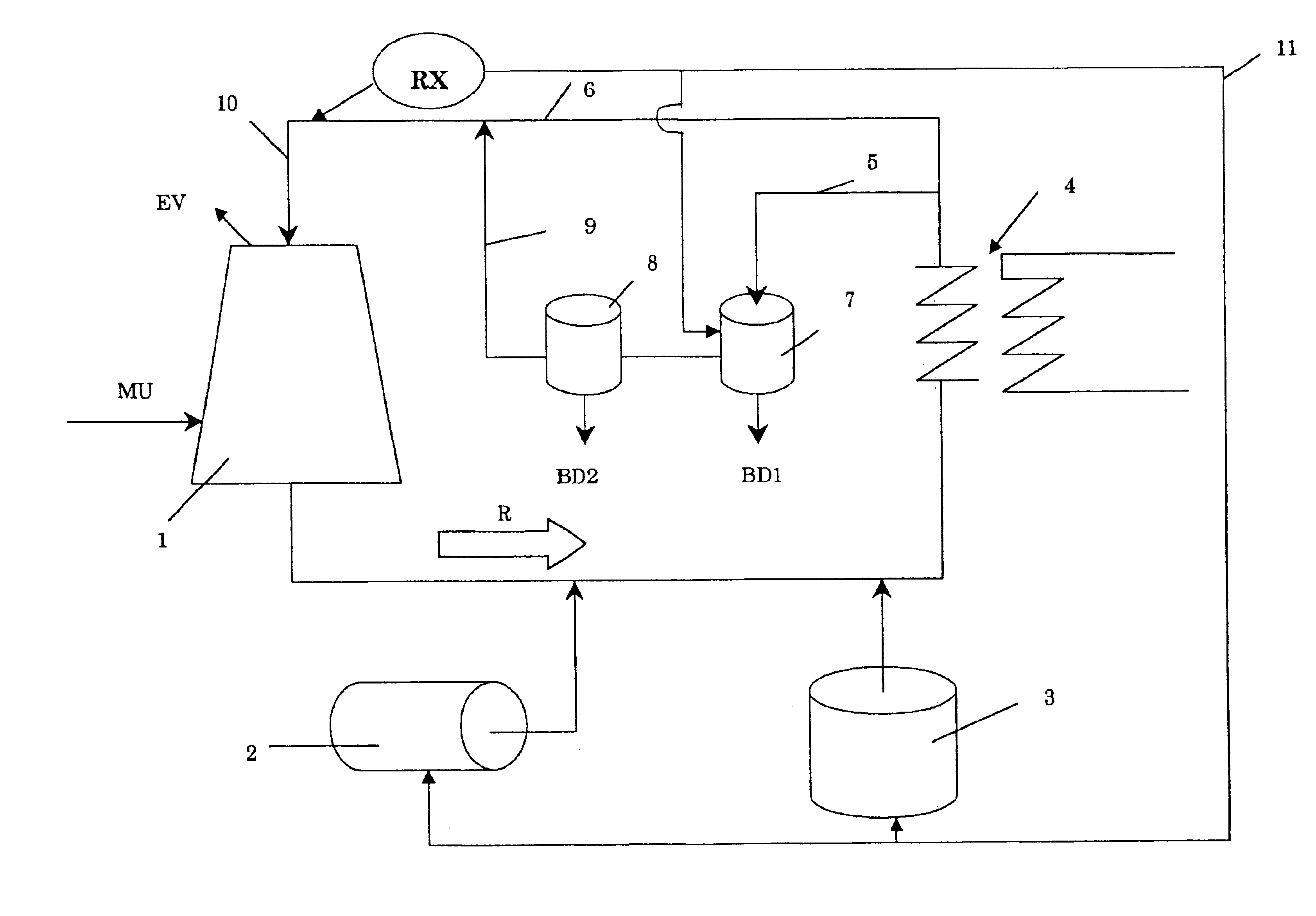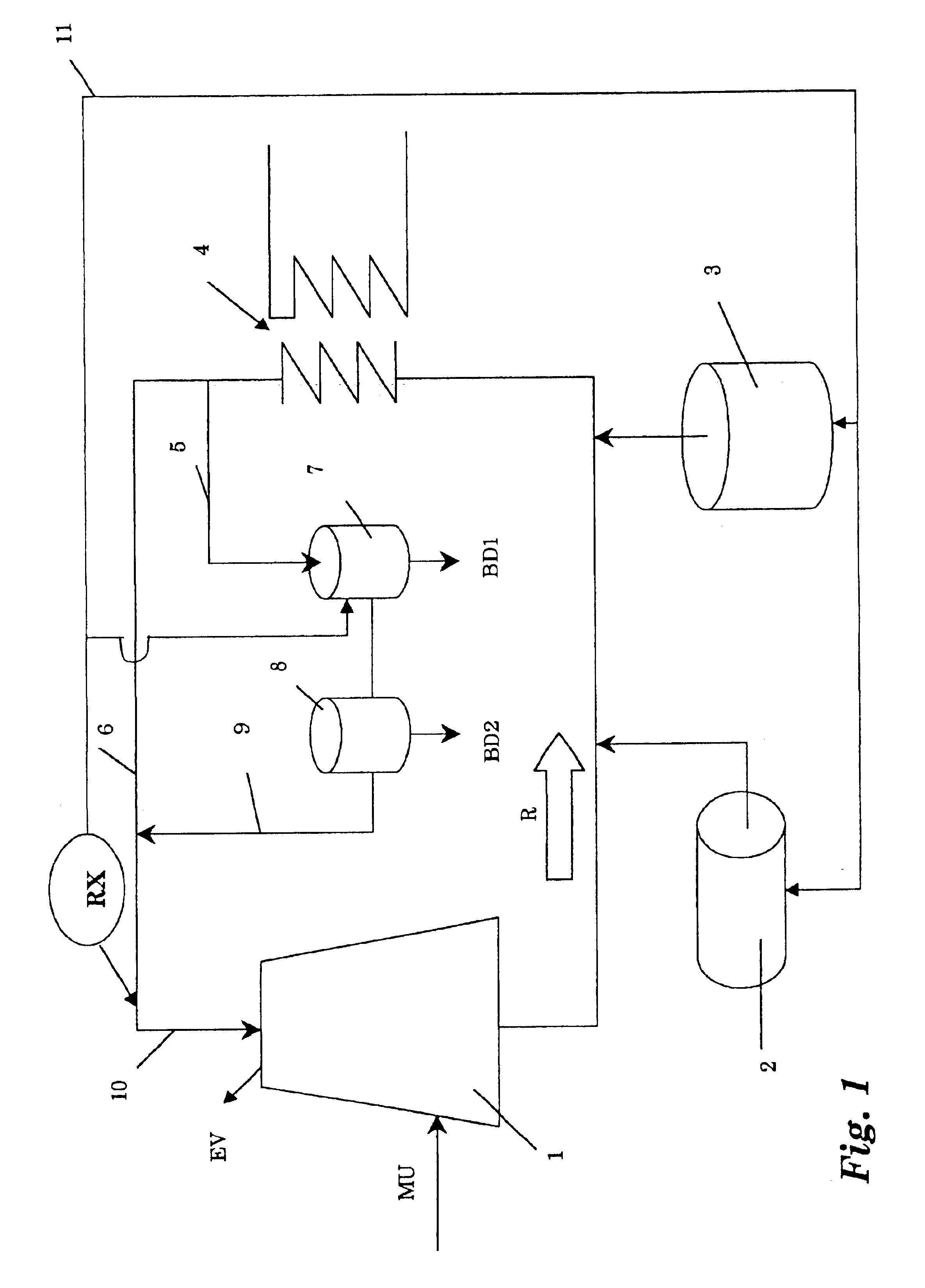Water treatment method and apparatus
a technology of water treatment and wastewater treatment, applied in the direction of water/sewage treatment by oxidation, lighting and heating equipment, water treatment water, etc., can solve the problems of unsatisfactory waste disposal, all prior art methods and equipment, and high demand for purifying chemicals, so as to reduce the emission of industrial and urban waste, reduce the emission of waste, and reduce the demand for wastewater treatment volume
- Summary
- Abstract
- Description
- Claims
- Application Information
AI Technical Summary
Benefits of technology
Problems solved by technology
Method used
Image
Examples
Embodiment Construction
The invention will now be illustrated with reference to FIG. 1. Specific operational data will be provided below, for the purpose of illustration, it being understood that any values are given as exemplary values, in order to better illustrate the invention, but the invention is of course not limited to any particular operating conditions. In the figure, numeral 1 indicates the cooling tower, which operates with a make-up feed, MU, which in the example is 15 m.sup.3 / hr. The MU stream may contain a high content of organic contaminants, such as a stream having a chemical oxygen demand (COD) of about 500-1000 ppm. It should also be noted that the COD may, at peak values, exceed 2000 ppm. When the COD increases, it is desirable to employ non-oxidizing biocides, e.g., chlorinated phenol, to assist in reducing and preventing biofouling. This, as will be apparent to the skilled person, is a concentration by far higher than acceptable according to the prior art. Still, when operating accor...
PUM
| Property | Measurement | Unit |
|---|---|---|
| height | aaaaa | aaaaa |
| diameter | aaaaa | aaaaa |
| diameter | aaaaa | aaaaa |
Abstract
Description
Claims
Application Information
 Login to View More
Login to View More - R&D
- Intellectual Property
- Life Sciences
- Materials
- Tech Scout
- Unparalleled Data Quality
- Higher Quality Content
- 60% Fewer Hallucinations
Browse by: Latest US Patents, China's latest patents, Technical Efficacy Thesaurus, Application Domain, Technology Topic, Popular Technical Reports.
© 2025 PatSnap. All rights reserved.Legal|Privacy policy|Modern Slavery Act Transparency Statement|Sitemap|About US| Contact US: help@patsnap.com


